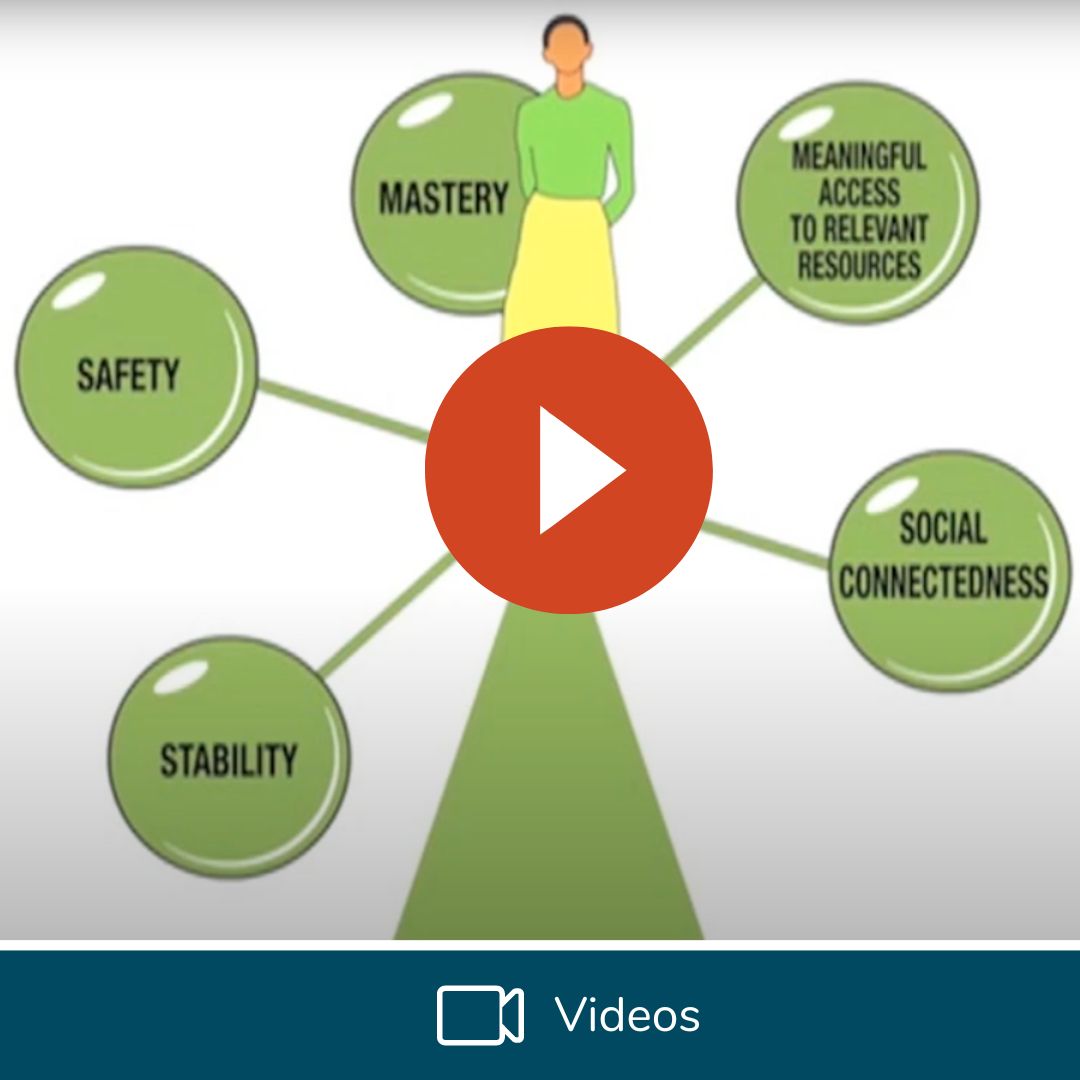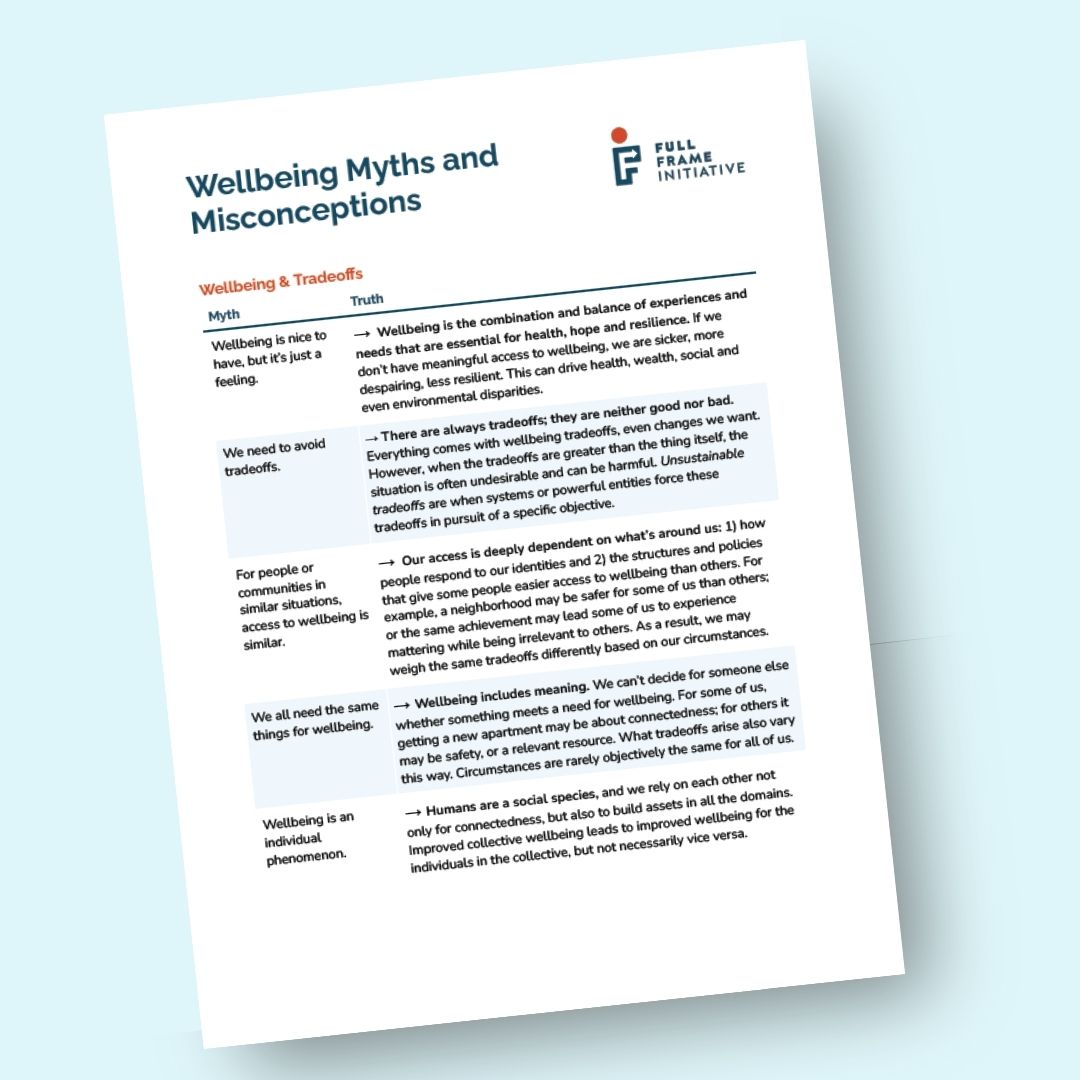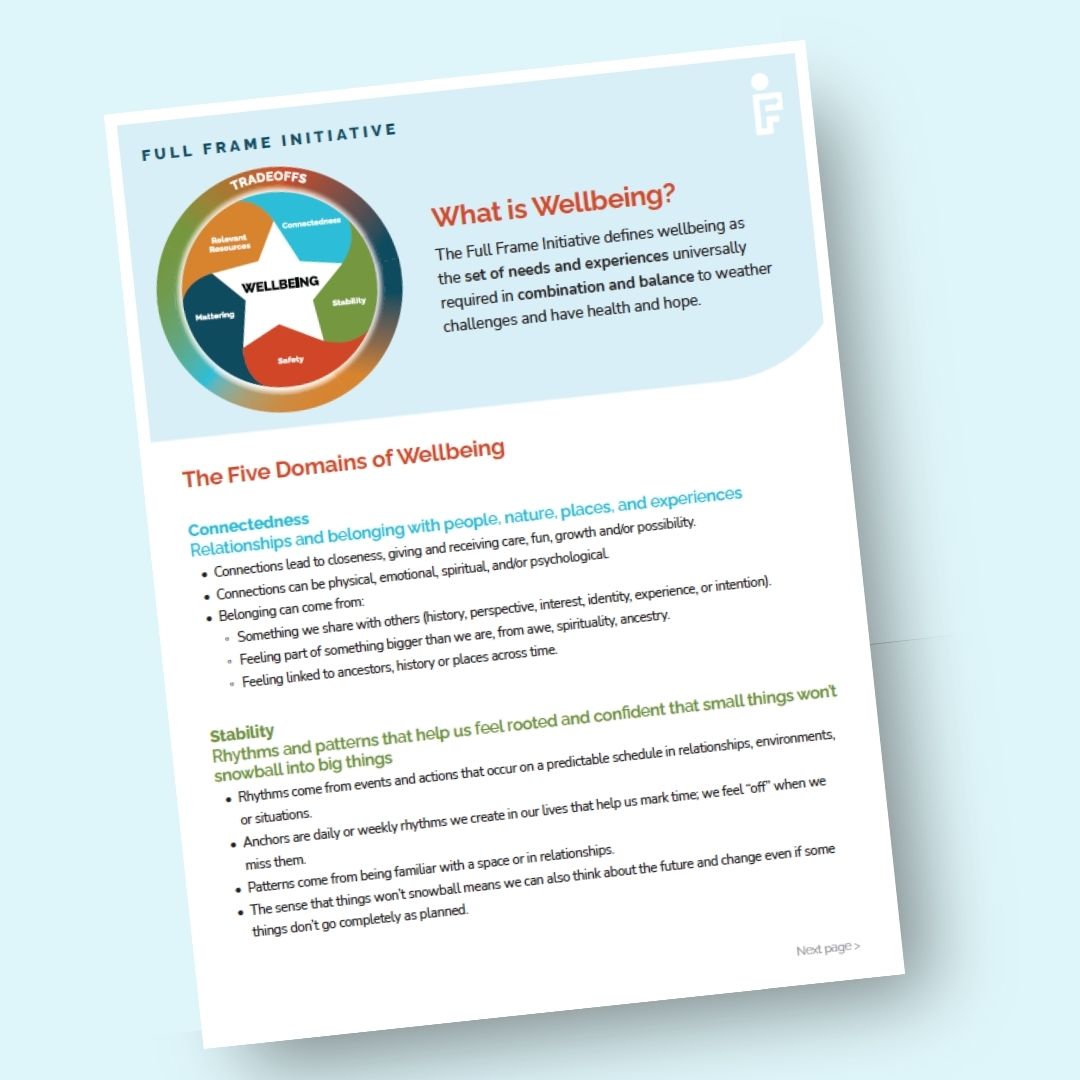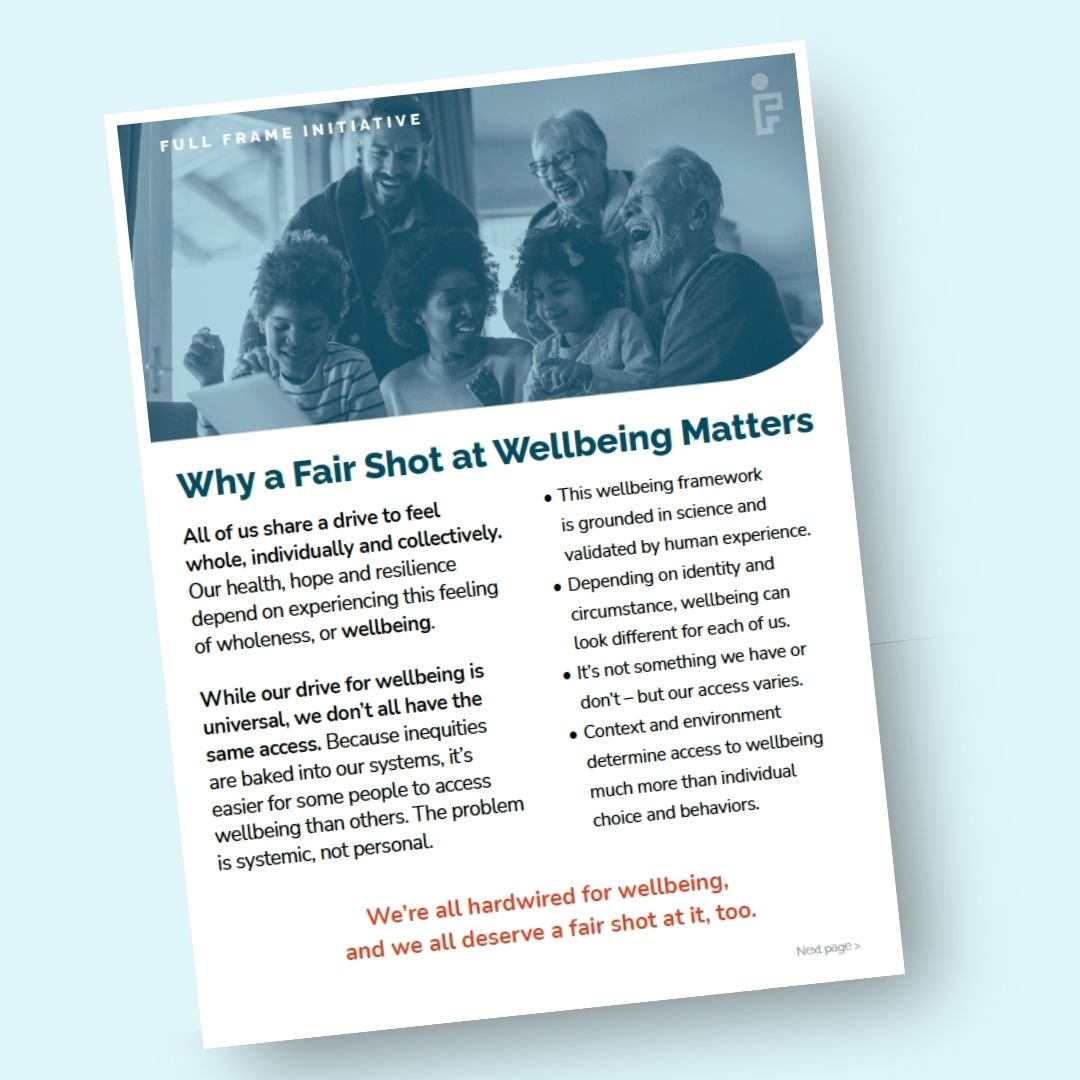Wellbeing is the set of needs and experiences essential, in combination and balance, to weather challenges and have health and hope. Learn more in this video introduction.

In domestic violence, homelessness, addiction, poverty, too often people in communities who face multiple complex challenges are seen as a list of problems. So we create programs to fix the problems.
As a country, we spend half a trillion dollars a year on problem-centered safety net programs. And for a lot of people, they do the trick. But for people at the deep end of the deep end, progress made in one program can be quickly undone by what it takes to make progress and another.
Like a new job placement that becomes out of reach when someone has to move to a shelter across the state. It’s a harmful merry-go-round of short-term progress without long-term gains.
Truly breaking cycles of poverty, violence and trauma means seeing people and families and communities not problems at the center. It means remembering, first and foremost, that people are people and recognizing that we all share the same fundamental needs.
What the Full Frame Initiative calls the five domains of wellbeing, social connectedness, stability, safety, mastery, meaningful access to relevant resources.
We don’t meet our needs in these domains one by one, they build on each other. We’re safer when we’re more connected to other people. With more mastery, we can access resources better. What it means to be safe, or stable, or connected. depends a lot on our personal history and background. But the research is clear. We all need to have assets in all five domains to thrive, and we’re driven. Try to meet our needs in these five domains of well being as best we can given our circumstances.
Because each of the five domains is equally important. We all steer away from choices that may help us in one domain but extract to greater costs in another like taking a promotion if it means uprooting a child who’s finally found a school where she is important. Systems and services that help people make progress that lasts do so by helping them to build on their assets, and minimize tradeoffs among the five domains.
This isn’t about doing everything for everyone. It means using an approach that, for example, supports someone facing violence to become safer without eroding all her social connections or her financial stability.
Imagine if more community-based programs and government systems work this way. More people, more communities could move from surviving to thriving. A few organizations and government agencies around the country are leading the way with the Full Frame Initiative’s help. They’re using the five domains of wellbeing to put people at the center and help people make change that lasts.
See things differently. Help others see things differently. Send them this video, and tell them about the five domains of wellbeing.

Wellbeing isn't just a nice to have and we break down the myths and misconceptions about wellbeing and tradeoffs.

The Full Frame Initiative defines wellbeing as the set of needs and experiences universally required in combination and balance to weather challenges and have health and hope.

All of us share a drive to feel whole, individually and collectively. We're all hardwired for wellbeing, and we all deserve a fair shot at it, too. But we don't all have the same access.